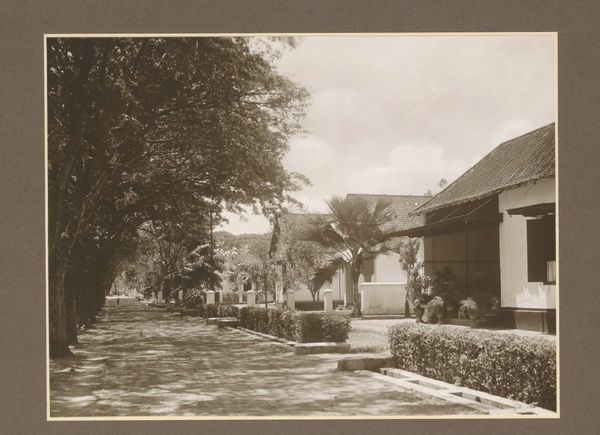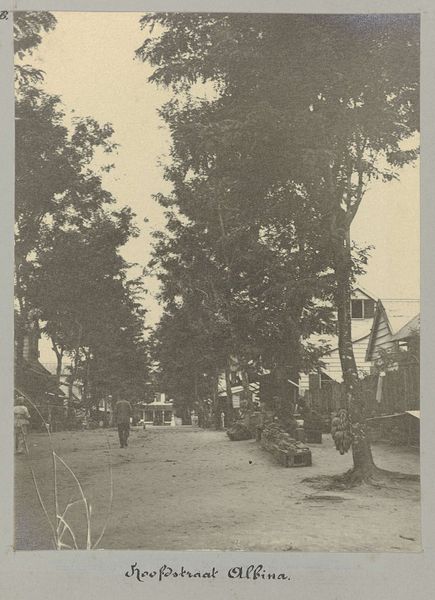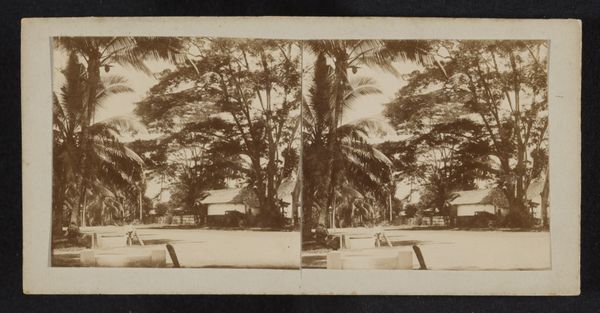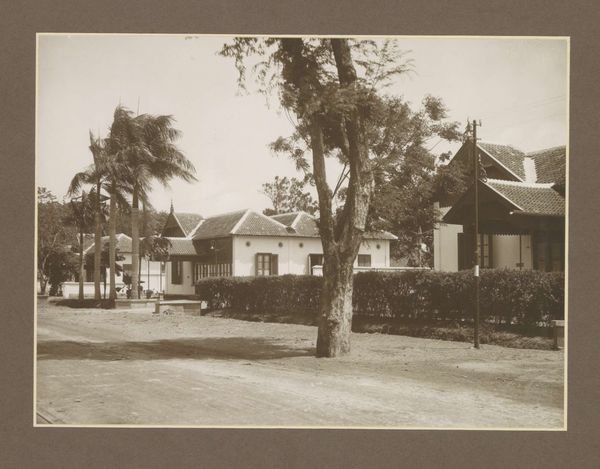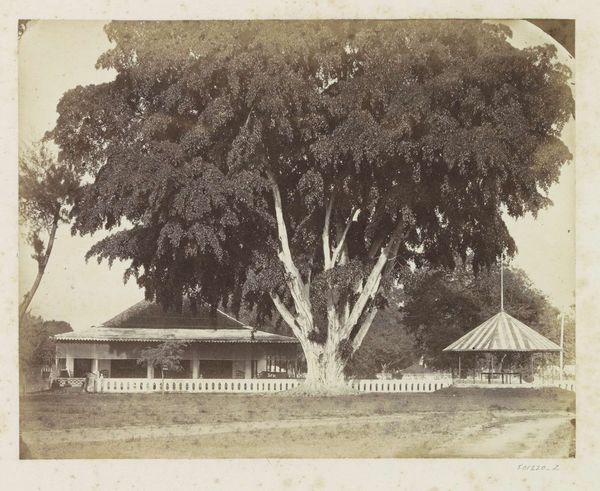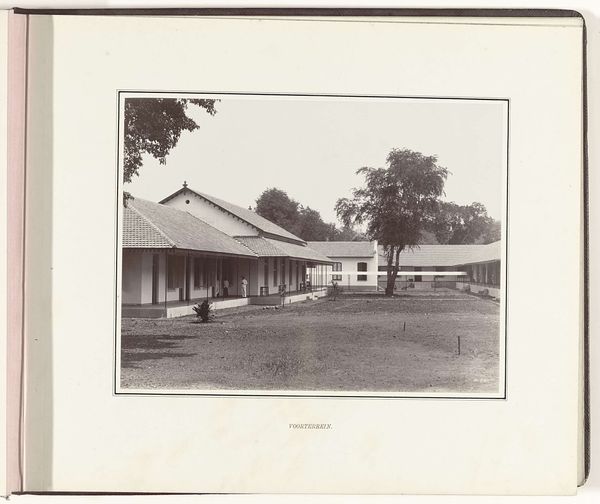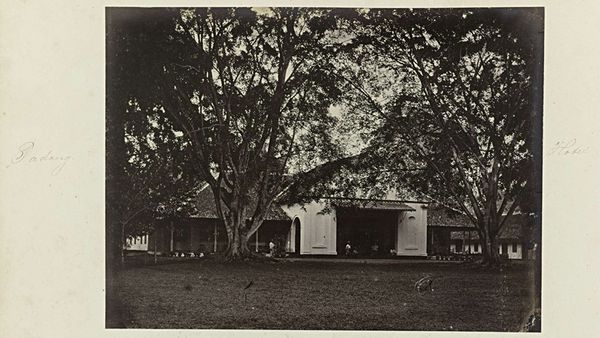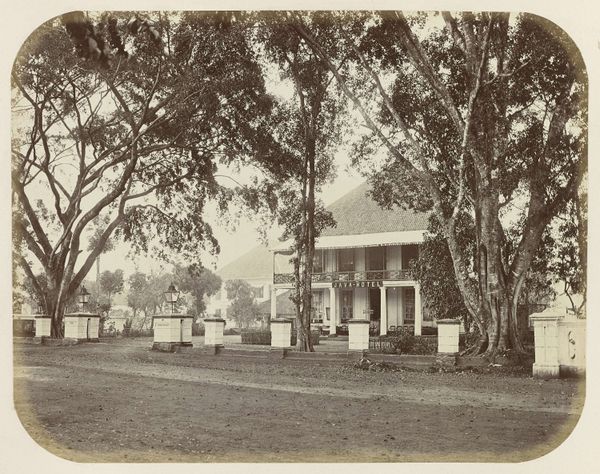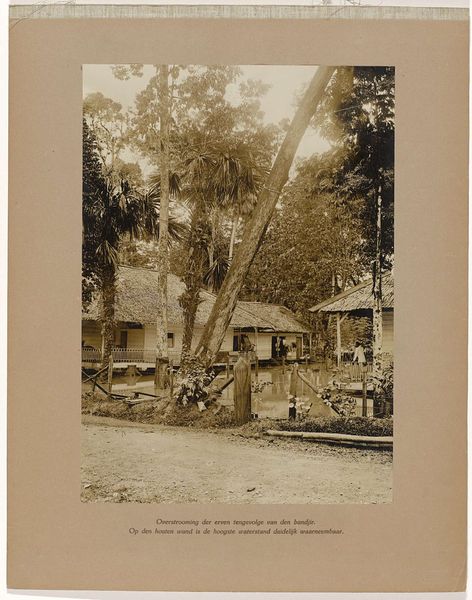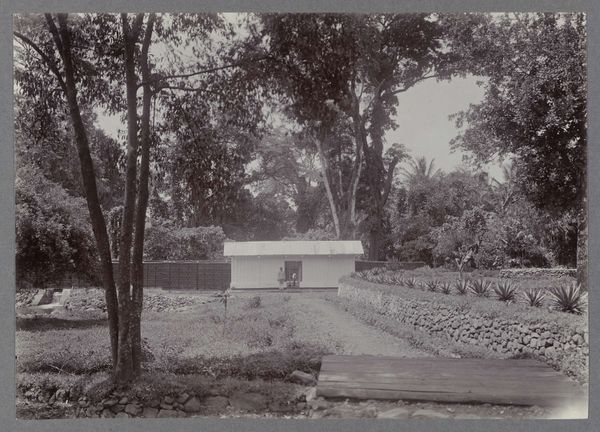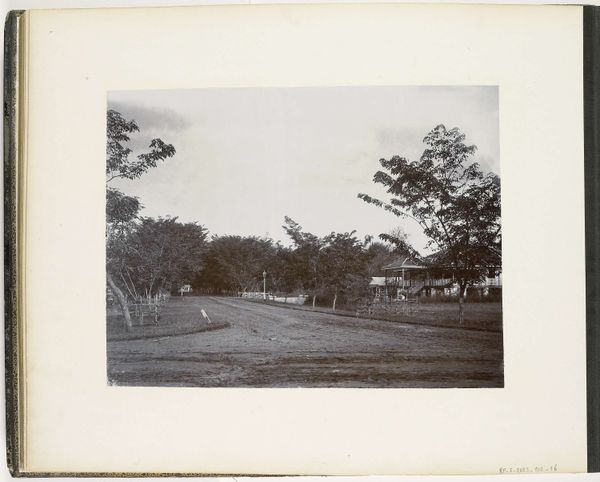
print, photography, albumen-print
# print
#
landscape
#
photography
#
orientalism
#
albumen-print
Dimensions: height 14 cm, width 9 cm
Copyright: Rijks Museum: Open Domain
Editor: So, this is “Pasar Baroe-Bandoeng,” a photograph taken around 1900 by Boekhandel Visser & Co. It's an albumen print, a very common photographic process at the time. It looks so serene, with the giant trees sort of guarding this official-looking building. What do you see in this piece? Curator: Well, instantly I think about the power dynamics at play. This photograph, made by a European company, depicts a landscape in Bandung, likely during the Dutch colonial period. The imposing trees framing what’s labeled as “Controleurswoning” – the Controller’s Residence – suggests a constructed image of authority and dominance. Consider who had the power to commission and disseminate such imagery. Editor: That makes sense. I was thinking about the trees as beautiful and sheltering, but you're right, the photographer definitely chose that perspective to show the "Controller's Residence" as important and imposing. How would this image have been used or viewed back then? Curator: Images like these circulated widely as postcards or illustrations, shaping perceptions of the "exotic" East. They reinforced a colonial gaze, presenting a specific narrative about the Dutch presence and control in Indonesia. It wasn’t a neutral recording; it was a deliberate visual statement. And think about the consumption of these images by people back in Europe; what ideas about colonial power did it reinforce? Editor: So, beyond the surface beauty, there's this whole layer of political messaging embedded in the image itself, and the way it was circulated? Curator: Precisely. And it prompts us to consider whose stories are missing. We see the symbols of colonial authority, but where are the images depicting the experiences and perspectives of the local Indonesian population? Editor: That’s a really important point. I'll definitely look at these historical images differently now. Thinking about whose perspective is prioritized – that's something I will keep in mind. Curator: Indeed. Examining art through the lens of history helps us understand its role in shaping cultural narratives and power structures.
Comments
No comments
Be the first to comment and join the conversation on the ultimate creative platform.

